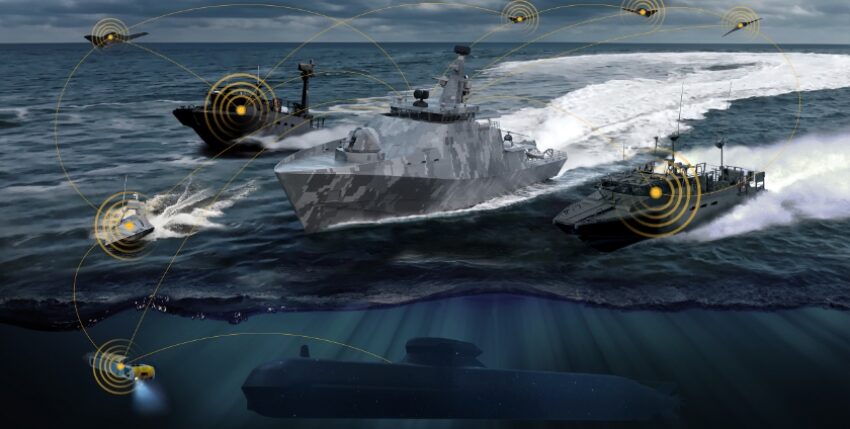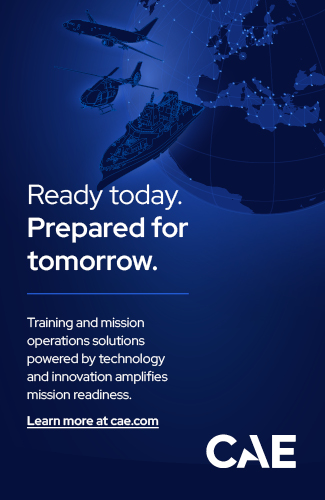Many companies are developing new combat boats or equipping tried and tested ones with modern technology for autonomous use. One of the pioneers is Team Germany with Tamsen, Hagenuk and Hensoldt.
In the wake of changing security policy challenges and the changing requirements for modern maritime deployment concepts, the further development of combat and operational boats is becoming increasingly strategically important. At the same time, the development of autonomous maritime systems is progressing rapidly. State-of-the-art sensor technology, AI-supported data processing and autonomous control systems are revolutionising military and security-related ship operations. Many nations are increasingly relying on unmanned systems, particularly in the areas of border protection, reconnaissance and tactical operations. Autonomous mission boats play a key role in improving reaction speed, operational range and increase the safety of the units.
An important point of reference for the future organisation of the German Navy is the Marine 2035+ vision, which envisages the increased integration of operational and combat boats into modern maritime operational concepts. These boats should offer greater flexibility, modular equipment and stronger networking with unmanned systems. The ability to conduct autonomous or remote-controlled operations in particular is seen as essential for adaptability to future conflict scenarios.
European and German developments
Internationally, the Watercat from the Finnish company Marine Alutech and the Combat Boat CB 90 from Saab are examples of modern combat boats. The Watercat 1250, already in service with the Swiss Army, is just as impressive as the Finnish Navy's Watercat M 18 Jehu thanks to its modular design and flexible operational capability, which enables rapid troop transport and versatile reconnaissance missions. Boats in the Watercat series are air-transportable. The Combat Boat CB 90 in particular has established itself as a versatile, fast and robust operational boat. With over 250 units in service worldwide - including with the Swedish, Norwegian, American and Ukrainian navies - it forms a proven basis for maritime operations. The latest generation, the CB 90 NG, has improved controls, more powerful water jets and a modern combat management system. The German team, consisting of Hagenuk Marinekommunikation, Hensoldt Sensors and Tamsen Maritim, is jointly developing modern solutions for the transport of maritime systems in air cargo carriers such as the A 400M. This collaboration emphasises the strategic focus on a networked and flexible maritime operational landscape.
German shipbuilders are also looking into combat boats. The designs from Lürssen, Fassmer and Team Deutschland are not yet autonomous. But they are setting standards in terms of speed, modularity and flexibility. With the FIB 25 class and the HSI 1700 design, Lürssen offers flexible boat types that are optimised for amphibious and coastal operations. These boats are already in use internationally and are characterised by high modularity and adaptability. With the FCC 17 Alligator, Fassmer has developed a fast and manoeuvrable combat boat that is air-transportable and suitable for special operations. With space for up to 24 crew members and a minimum crew of just two, it enables rapid tactical reactions.
Crew will remain on land in future
The Autonomous Ocean Core control system from Saab, which enables the unmanned utilisation of the CB 90, is a decisive step forward. The system, which was presented to the public last year at the Euronaval defence trade fair, integrates an open architecture that can be combined with existing ship automation systems and sensor technology. It improves operational efficiency and reduces risks for crews on dangerous missions. With the CB 90 Ocean Core, Saab demonstrates how existing platforms can be transformed into autonomous operational vehicles using modern control systems.
International trend
Its development is closely linked to global trends in the field of unmanned maritime systems. Here is a brief overview:
Kongsberg Maritime from Norway has developed unmanned surface vehicles that are used for security and surveillance tasks. The flexible platform can be used in a variety of scenarios, including harbour surveillance and maritime border control.
The US company Sea Machines Technologies is known for its autonomous control systems, which are used commercially and militarily. These systems are particularly important for patrol and rescue missions.
In the Netherlands, Damen Shipyards offers innovative approaches for border and coastal protection with autonomous patrol boats. By using intelligent navigation and control systems, boats can operate without human intervention. The FCS 4008 developed by Damen for industrial offshore operations served as a template for the Royal Navy's NavyX innovation project. The prototype "XV Patrick Blacket" test platform trialled there is cited as an example in the German Navy's 2035+ target vision.
In the United States, DARPA (Defense Advanced Research Projects Agency) and Leidos have created the Sea Hunter, an autonomous long-range vehicle that can operate in open waters for long periods of time without a crew. This concept revolutionises maritime surveillance missions. DARPA and Serco launched the unmanned ship USX-1 Defiant in February 2025.
QinetiQ from the UK develops agile, remote-controlled platforms that are suitable for various missions, including reconnaissance, patrols and offensive operations.
Naval Group (France) offers multi-mission solutions, autonomous or remote-controlled, in four product lines. Seaquest, a surface drone, was presented at Euronaval in November 2024. It comes in several formats and has already been trialled on board the French FREMM frigates.
Prospects and challenges
The ongoing development of autonomous systems in the maritime sector brings numerous advantages, including increased range, reduced operating costs and lower risks for human crews. At the same time, the integration of autonomous ships into existing fleets poses new challenges. In particular, legal and ethical issues, such as responsibility and decision-making in unmanned operations, need to be clarified.
Nevertheless, it is foreseeable that autonomous operational boats will be able to play an increasingly important role in modern navies and security forces. Technological development will continue to progress rapidly in order to enable higher levels of autonomy, better networking and more efficient deployment scenarios.
Hans Uwe Mergener











2 responses
https://marineforum.online/autonome-seefagrt-anschuetz-setzt-massstaebe/
Anschütz's solution is proven, approvable and independent of the platform. A successful demonstration was carried out in cooperation with an operational system as early as 2022 as part of the WDS.
https://marineforum.online/autonome-seefagrt-anschuetz-setzt-massstaebe/
Anschütz's solution is proven, approvable and independent of the platform. A successful demonstration was carried out in cooperation with an operational system as early as 2022 as part of the WDS.